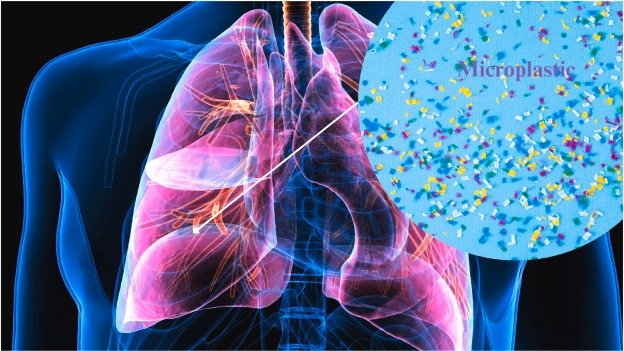Humans breathe in tens of thousands of microplastics indoors each day, study finds
A new study published in PLOS One by French researchers reveals that people may be breathing in significantly more microplastics in indoor environments than previously estimated, Kazinform News Agency correspondent reports.

According to the findings, adults could inhale up to 68,000 microplastic particles per day, while children may take in around 47,000. The team found that apartments had a median level of 528 plastic particles per cubic meter of air, while the concentration in cars reached up to 2,238 particles.
“What surprised us the most was how much microplastics were present in the air of the environments we consider safe and familiar, like our homes and cars. We often associate plastic pollution with oceans or industrial areas, but our findings showed that the everyday indoor environment where we spend most of our time can be a major source of human exposure. The number of particles we found was both surprising and concerning, and is the result of the degradation of numerous plastic objects in our homes, including carpet, curtains, paint, textiles, and other household items,” co-authors of the study Nadiia Yakovenko and Jeroen E. Sonke said.
The researchers reported that 94% of detected particles were smaller than 10 micrometers, meaning that they are small enough to bypass respiratory defenses and settle deep in the lungs.
“Inhaled MP1–10 µm can cross cellular barriers, entering the bloodstream and potentially causing systemic effects, including oxidative stress, immune responses, and even damage to vital organs over time. Additionally, MPs can carry a range of toxic additives, including heavy metals and persistent organic pollutants, which may exacerbate their harmful effects. These chemicals can leach out once inside the body, potentially disrupting endocrine functions, impairing cellular processes, or increasing the risk of cancer. The combination of physical and chemical stressors makes the inhalation of MPs particularly worrisome from a public health perspective,” the research explained.

The study also points out that while some larger microplastic particles may not reach the lungs, they can become trapped in the respiratory tract and eventually swallowed, potentially increasing plastic intake through the digestive system.
“These particles do not penetrate the lungs, but are most likely subjected to mucociliary clearance. Inhaled MPs trapped in the mucus layer are moved from the lower respiratory tract (bronchi and bronchioles) to the upper respiratory tract (throat). When mucus with trapped MPs reaches the throat, it can be coughed up or cleared by the body through expectoration (spitting) or swallowing. The process of swallowing is the most likely way to evacuate the mucus, but it leads to the transport of MPs to the gastrointestinal system. The potential MP10–300 µm intestinal intake, from airborne exposure, exceeds best-estimates of direct dietary MP exposure of 553 and 858 MPs/day from food and beverages for children and adults in the 1–5,000 μm range, suggesting that inhalation of MP10–300 µm is an indirect pathway for gastrointestinal MP exposure, adding to the overall burden of MPs in the human body,” the study read.
The researchers emphasize that the full impact of chronic microplastic exposure is not yet fully understood, but the evidence suggests it may have even more health implications.
“While research is still ongoing, there is concern that long-term exposure to microplastics and their additives may contribute to respiratory problems, disrupt endocrine function and increase the risk for neurodevelopmental disorders, reproductive birth defects, infertility, cardiovascular disease, and cancers,” Yakovenko and Sonke noted.
Earlier, Kazinform reported that microplastics can pose a threat to photosynthesis, threatening crops, marine life, and the climate.
